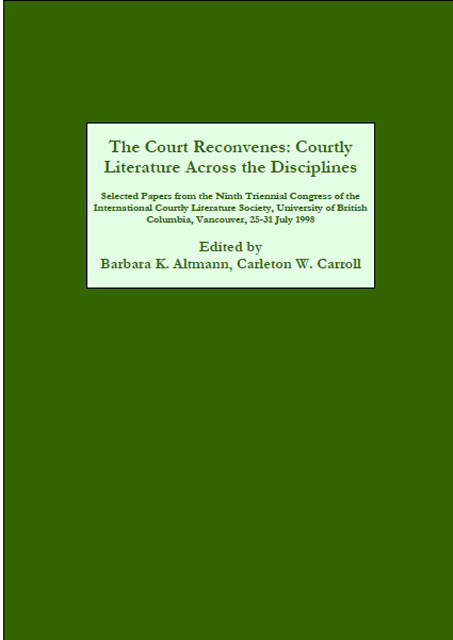 The Court Reconvenes
The Court Reconvenes Literary Uses of Heraldry in the Twelfth and Thirteenth Centuries
Published online by Cambridge University Press: 31 March 2023
Summary
Introduction
In the year of Our Lord 1300 and in the twenty-eighth year of his reign, Edward I, king of England, laid siege to Caerlaverock Castle near Dumfries in Scotland. The short battle which ensued was part of a series of campaigns the English monarch led against the Scots in the course of which he eventually met his death in 1307. The castle still stands in a splendid setting overlooking the Solway Firth.
Caerlaverock was a clear victory for Edward and, after the surrender, Robert de Clifford, one of the king's most trusted captains, was made keeper of the castle. A contemporary 956-line French poem in octosyllabic verse entitled “Le Siege de Karlaverok” commemorates this event and is of particular concern to people specializing in heraldry as it provides accurate blazons of the coats of arms of over a hundred of the combatants on the English side (Eight … Rolls of Arms 101–22).
At the end of the poem, the author records that Edward ordered seven banners to be flown from the battlements. First, his own, i.e., England (Gules, three lions passant guardant or); also, the banners of three barons who played an important role in the siege, John de Segrave (Sable, a lion rampant argent crowned or ), Humphrey de Bohun, earl of Hereford and constable of England (Azure, a bend argent cotised and between six lions rampant or), and Clifford (Checky or and azure, a fess gules). Finally – and this is interesting – three other banners, those of St. Edmund (Azure, three crowns or), St. George (Argent, a cross gules), and Edward the Confessor (Azure, a cross patonce between five birds or) (Eight … Rolls of Arms lines 945–51).
That Edward, Segrave, Hereford, and Clifford bore the arms ascribed to them in the poem and were present at the siege of Caerlaverock Castle is a matter of historical record. But the three other coats of arms are attributed to individuals who lived before the rise of true heraldry in the second quarter of the twelfth century.
In 1066, the death of Edward the Confessor, king of the English, precipitated the Norman invasion. St. Edmund, king and martyr, died in 869. And the cult of St. George dates back to the end of the third or the beginning of the fourth century (Attwater 148).
- Type
- Chapter
- Information
- The Court ReconvenesCourtly Literature across the Disciplines: Selected Papers from the Ninth Triennial Congress of the International Courtly Literature Society, University of British Columbia, Vancouver, 25-31 July 1998, pp. 15 - 26Publisher: Boydell & BrewerPrint publication year: 2002


